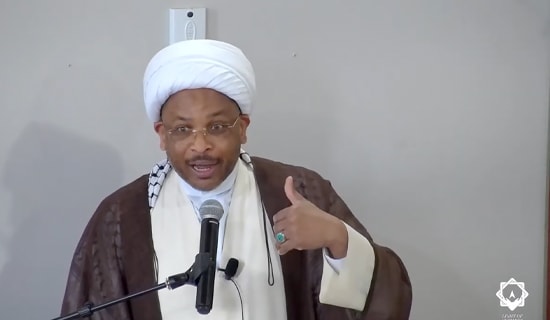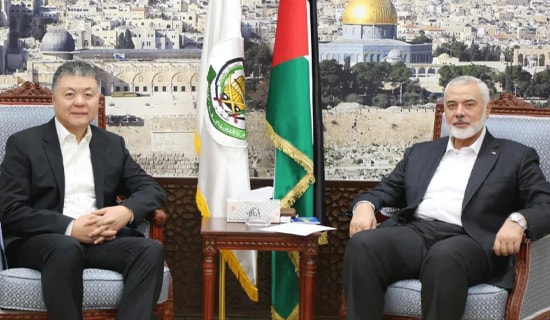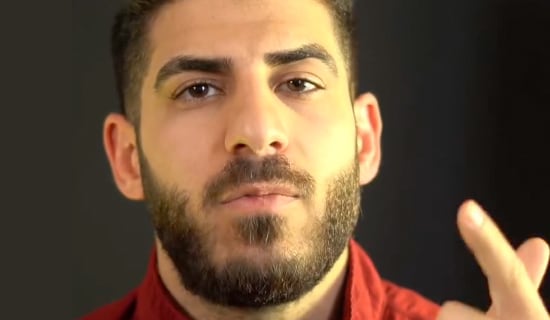
In India, the dominant image of a Muslim woman, both in the minds of Muslims and non-Muslims, is the one fostered by Islamic clerics. Much like how images of gods and goddesses help Hindus to mentally access the spiritual world, stereotypes are concepts that aid humans' ability to comprehend social realities. Two decades ago, there were few burqa-clad Muslim women in the streets of Indian towns. Now, as burqa-clad Muslim women are joining us, more than before, in streets, buses, shops, and other public spaces, the image shaped by clerics of a Muslim woman has been strengthened.
Nazia Erum's book "Mothering A Muslim" is about how stereotypes held by Hindus lead to the bullying of Muslim children in schools. "Get away from the ball, you Paki!" "Are you a Muslim? I hate Muslims." "Is your father part of the Taliban?" "Hey, do you eat beef?" "Do your mum and dad make bombs?" Muslim children face such questions in schools from classmates and sometimes from teachers. These children get angry, and sometimes confused. One child asked his mom: "Are we Pakistanis?" In one case, parents wrote to the school administration to move their child to another class because there was too much "M factor" – Muslim factor – and were obliged.
The Political Context Of Hatred
The context of bullying in the name of religion is shaped by post-9/11 events. Hatred also thrives in certain political cultures emanating from certain political parties. The anti-Muslim hate in India was strengthened from the 2014 parliamentary elections onward when a right-wing pro-Hindu party under Prime Minister Narendra Modi came to power. Many Muslims have been killed for transporting cows, or pulled off trains for being Muslim, identified by the cap or beard the Muslim wore. Since lower-caste Dalits also work in the meat industry, some Dalits also became victims. These incidents happened in states ruled by Prime Minister Modi's party.
SUPPORT OUR WORK

In her December 31, 2017 column in The Indian Express, senior journalist Tavleen Singh noted that Prime Minister Modi "has never once used his [weekly radio address] Mann ki Baat to condemn the lynching of Muslims... He has shown disapproval of vigilante violence only twice. In both cases the victims were Dalits. Not once has he indicated that hacking Muslims to death or burning them alive and posting videos of this on the Internet is something that revolts him." Muslim mothers are worried. One mother tells Nazia Erum that after the 2014 elections, "people just became very in-your-face with their feelings [of hatred] about Muslims."
The Muslim mothers' concerns discussed in this book are not necessarily the concerns of the average Muslim woman in India we generally think of. The average Muslim woman is a housewife, cooks for her husband, sends the children to the madrassa or government schools, sometimes wears a burqa, helps on the farm, walks into local grocery shops for day-to-day necessities. The author lifts the readers out of this dominant narrative and places them in the context of the Muslim mother who is a dentist, architect, IT professional, advocate, a gynaecologist in a hijab, curator, educationist, or the like. Muslim mothers of this class live in cities, regularly mix with Hindus, and send their children to the best schools, where the bullying of Muslim children takes place.
To write the book, the author Nazia Erum, a communications professional who now runs a fashion startup, spoke with 145 families in 12 cities over one year. Most of these Muslim families live in cities and constitute a class of Muslims that is cosmopolitan in outlook. This book, therefore, is an inquiry into the bullying of Muslims children in elite schools by Hindu classmates who bring their prejudices from their parents, who constitute the elite of India. The victims of this hatred are both the Muslim children as well as the Hindu children – let us not forget that all of them are children in schools and must not go through it. In an unwritten way, the book reveals that the Indian elite nurtures a hatred of Muslims and transmits this hate to their children.
Islamophobia Vs. Islamic Racism
One can also infer that the vast majority of Muslims and Hindus who are not part of the urban elite live in harmony. This book cannot be said to represent the Muslim mothers whose husbands are tailors, labourers, butchers, peasants, shopkeepers, or mechanics who work by the roadsides from Delhi to Kolkata, and the like. While the book's concerns about the bullying of Muslim children in schools are indeed real and must be addressed, the book is not merely about bullying. Its pages can be divided into three parts. Only the first part is about bullying in the name of religion, while the third part includes appendices with the author's detailed interviews of the mothers and children, many of whom have grown up now.
A recurring reference in the book is to Islamophobia, but it will be a huge mistake to blame all Islamophobia on Hindus and other non-Muslims. A significant part of Islamophobia is birthed by Islamic clerics and Muslim leaders. This is where the author rises in the middle part of the book, which is devoted to Islamic fundamentalism and how Saudi money has promoted a version of Islam that is inconsistent with religious harmony. Muslims returning from Saudi Arabia "talk about Islam to us as if they were educating non-Muslims!" One such Muslim youth who is about to visit his mother's brother tells him: "We have just come to know that you have a Hindu cook, so what about our food? How will we eat?"
This is a proof about how Islamic clerics effectively birth a kind of Islamic racism toward Hindus and non-Muslims. Islamophobia, as a reaction to it, stands justified. Nowadays, most non-Muslims can read the Koran and know how Islamic clerics use numerous verses to promote hatred toward kuffar ("infidels"), mushrikeen ("idolaters"), munafiqeen ("hypocrites"), and the like. Nazia Erum, the author, is dispassionate. "It's no more the elephant in the room. Conservative Islamization and rabid Islamophobia today are the twin camels we cannot tame," she observes. Ultimately this is a book by a Muslim mother. "Today's parenting includes providing children with a script on how to behave and what to do if they're recognized as a Muslim," she says.
The mother in her tries to find out if schools are addressing the bullying in the name of religion. The only case of such a good example was set by the Shiv Nadar School, near Delhi, which organized a week-long workshop to introduce its students to concepts such as "Us Vs. Them" in different contexts. While this is a solitary example, there are numerous others outside schools. Numerous schools and NGOs in Indian society routinely organize ekta ("harmony") days and weeks. I have wondered why Indian leaders thought of such events. The answer must be: They were aware of the religious fault lines in Indian society and wanted to foster inter-faith harmony. Such good practices override the religious differences of India on a daily basis.
* Tufail Ahmad is Senior Fellow for the MEMRI Islamism and Counter-Radicalization Initiative.




